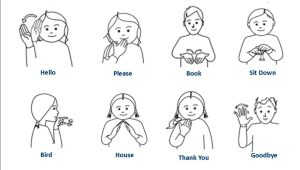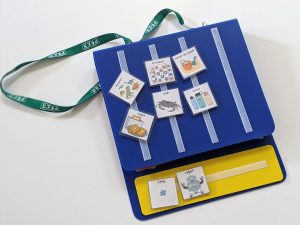Other Ways to Communicate

When we talk about communication people often only think about speech, but there are lots of different ways to communicate. Eye contact, body language, facial expressions, gestures, and drawing and writing are daily tools we might use for sharing information.
At Inspirations we follow the Reggio Emilia approach, where one of our key principles is the ‘hundred languages of learning’. The principle refers to communication and the one hundred ways children can express and process the world around them. It provides children opportunities to engage through arts and media, light and shadow and music.
At Inspirations we implement this approach through our daily sessions. The pre-school children decide where they would like to go at choosing times. They may choose to stay in the yurt and outdoor classroom, where the environment is carefully set up by trained staff which use the children’s interests to extend their learning, or they may decide to go off site. Our child-led curriculum provides forest school and art studio workshops twice a day, for two hours. Working in small groups in the art studio ensures that the children can work intimately on projects, expressing their thoughts and ideas through a diverse range of mediums. The forest school sessions provide a breadth of natural resources for the children, and with the guidance from trained staff, a world of beauty, connection, movement and autonomy.
Communicating in all the different ways may come easier to some people than others and some may find them all challenging. Some people may have conditions which can affect the way they communicate. For example, someone who is autistic will often have difficulties when it comes to communicating, especially in social situations. Some people struggle to verbally communicate so will need to learn other non-verbal methods.
 In our nursery each room is supplied with visual aids. This picture-based resource enables babies and children that are preverbal to interact with us. Visuals provide good support to a verbal instruction and help children to understand and make connections. When necessary, we also use Boardmaker which is a software often used across Leeds to support children with Special Educational Needs and Disabilities (SEND) as well as children with English as an additional language. Using resources that they may use when they move on from us is important for consistency. Some children may need PECS, which is a Picture Exchange Communication System. This is a unique communication tool using Boardmaker to enable children to communicate their wants and needs. The programme involves another person acting as the communicative partner, responding to the child’s requests. It teaches children that communication is an exchange and how to put words together to form a sentence.
In our nursery each room is supplied with visual aids. This picture-based resource enables babies and children that are preverbal to interact with us. Visuals provide good support to a verbal instruction and help children to understand and make connections. When necessary, we also use Boardmaker which is a software often used across Leeds to support children with Special Educational Needs and Disabilities (SEND) as well as children with English as an additional language. Using resources that they may use when they move on from us is important for consistency. Some children may need PECS, which is a Picture Exchange Communication System. This is a unique communication tool using Boardmaker to enable children to communicate their wants and needs. The programme involves another person acting as the communicative partner, responding to the child’s requests. It teaches children that communication is an exchange and how to put words together to form a sentence.
In our baby rooms we use Makaton during singing times and for other frequent words such as ‘more’ or ‘drink’. Makaton involves signing key words, using a spoken word at the same time. Although it is not an official form of signing, it is based on signs used in the British Sign Language. Makaton was developed for very young children with special needs or other communicative challenges. It is helpful for someone who can hear but has difficulties with communication as it uses symbols, verbal words and hand signs.
Kayleigh Woolger